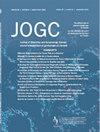创新三维成像在复发性卵巢癌二次清宫手术术前评估中的应用:一项试点研究。
IF 2
Q2 OBSTETRICS & GYNECOLOGY
引用次数: 0
摘要
导言:复发性卵巢癌二次细胞减灭术(SCS)的疗效仍存在争议,因此必须制定周密的术前计划。虽然三维成像技术已经改变了各学科的手术方法,但在妇科肿瘤学中的应用却刚刚起步。本研究介绍了一项在 SCS 准备过程中采用术前 3D 建模的新调查:在一所大学附属三级医疗中心进行了一项回顾性分析,研究对象为 2017 年至 2022 年期间因复发性卵巢癌接受 SCS 治疗的患者。患者被分为两组:术前CT三维成像组(A组)和无CT三维成像组(B组)。对两组患者的人口统计学特征、临床数据和手术结果进行了比较:结果:在 76 名确定的患者中,18 人被认为适合手术,其中 A 组中有 7 人进行了术前三维建模。虽然手术指标和合作努力在统计学上没有显著差异,但与 B 组(54%)相比,A 组(100%)达到无残留疾病(R0)的最佳清除率要高得多,显著性水平为 P = 0.05:基于 CT 的三维建模在卵巢癌二次细胞减灭术的术前阶段显示出加强手术规划的潜力。虽然这项开创性的研究强调了将三维成像整合到妇科肿瘤学中的潜在益处,但这项回顾性研究的局限性意味着这些发现主要是假设性的。有必要开展进一步的前瞻性研究来验证其影响。本文章由计算机程序翻译,如有差异,请以英文原文为准。
Innovative 3-Dimensional Imaging in Preoperative Evaluation for Secondary Cytoreductive Surgery in Recurrent Ovarian Cancer—A Pilot Study
Objective
The efficacy of secondary cytoreductive surgery (SCS) in recurrent ovarian cancer remains controversial, necessitating meticulous preoperative planning. While three-dimensional (3D) imaging has transformed surgical approaches in various disciplines, its application in gynaecologic oncology is nascent. This study introduces a novel investigation employing preoperative 3D modelling in SCS preparation.
Methods
A retrospective analysis was undertaken at a university-affiliated tertiary medical centre, examining patients who underwent SCS for recurrent ovarian cancer between 2017 and 2022. Patients were stratified into 2 cohorts: those with preoperative CT-based 3D imaging (group A) and those without (group B). Demographic profiles, clinical data, and surgical outcomes were compared between the groups.
Results
Among the 76 identified patients, 18 were deemed suitable for surgery, with 7 in group A undergoing preoperative 3D modelling. Demographics encompassing age and performance status were consistent across both groups, while Serous histology was more prominent in group B. Although operative metrics and collaborative endeavours exhibited no statistically significant variance, the attainment of optimal debulking with no residual disease (R0) was substantially higher in group A (100%) compared to group B (54%), with a significance level of P = 0.05.
Conclusion
CT-based 3D modelling in the preoperative phase of SCS for ovarian cancer shows potential for enhancing surgical planning. While this pioneering research highlights the potential benefits of integrating 3D imaging into gynaecologic oncology, the limitations of this retrospective study imply that these findings are primarily hypothesis-generating. Further prospective studies are necessary to validate the impact.
求助全文
通过发布文献求助,成功后即可免费获取论文全文。
去求助
来源期刊

Journal of obstetrics and gynaecology Canada
OBSTETRICS & GYNECOLOGY-
CiteScore
3.30
自引率
5.60%
发文量
302
审稿时长
32 days
期刊介绍:
Journal of Obstetrics and Gynaecology Canada (JOGC) is Canada"s peer-reviewed journal of obstetrics, gynaecology, and women"s health. Each monthly issue contains original research articles, reviews, case reports, commentaries, and editorials on all aspects of reproductive health. JOGC is the original publication source of evidence-based clinical guidelines, committee opinions, and policy statements that derive from standing or ad hoc committees of the Society of Obstetricians and Gynaecologists of Canada. JOGC is included in the National Library of Medicine"s MEDLINE database, and abstracts from JOGC are accessible on PubMed.
 求助内容:
求助内容: 应助结果提醒方式:
应助结果提醒方式:


